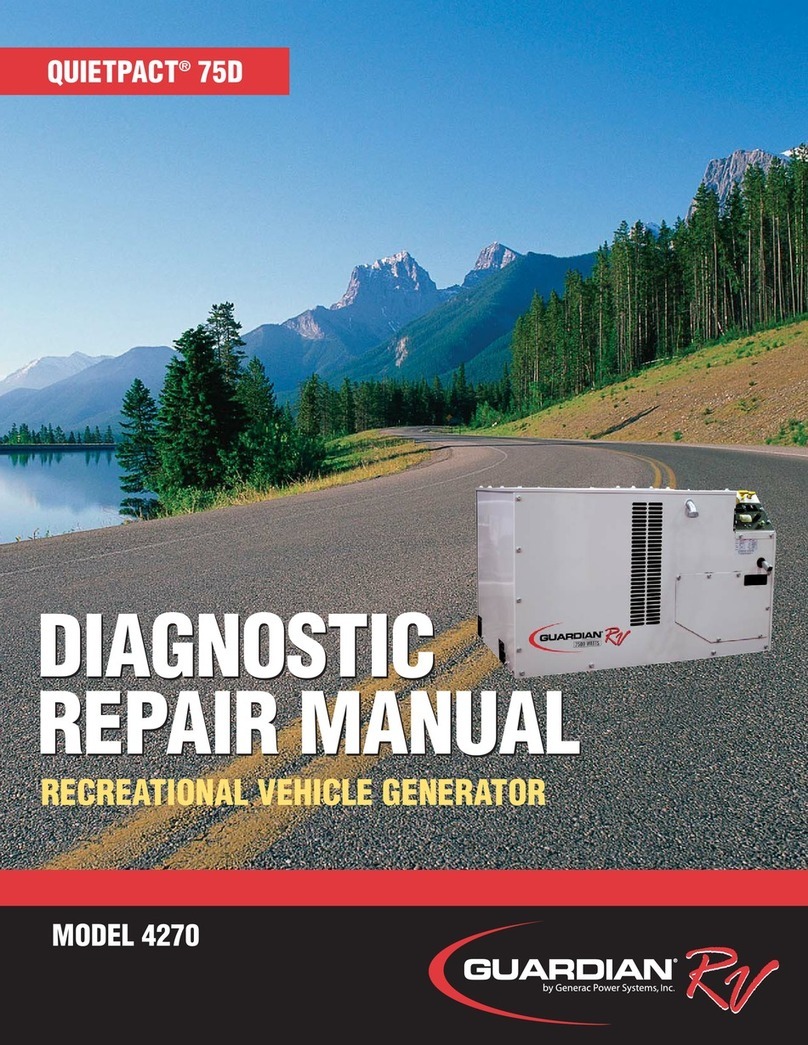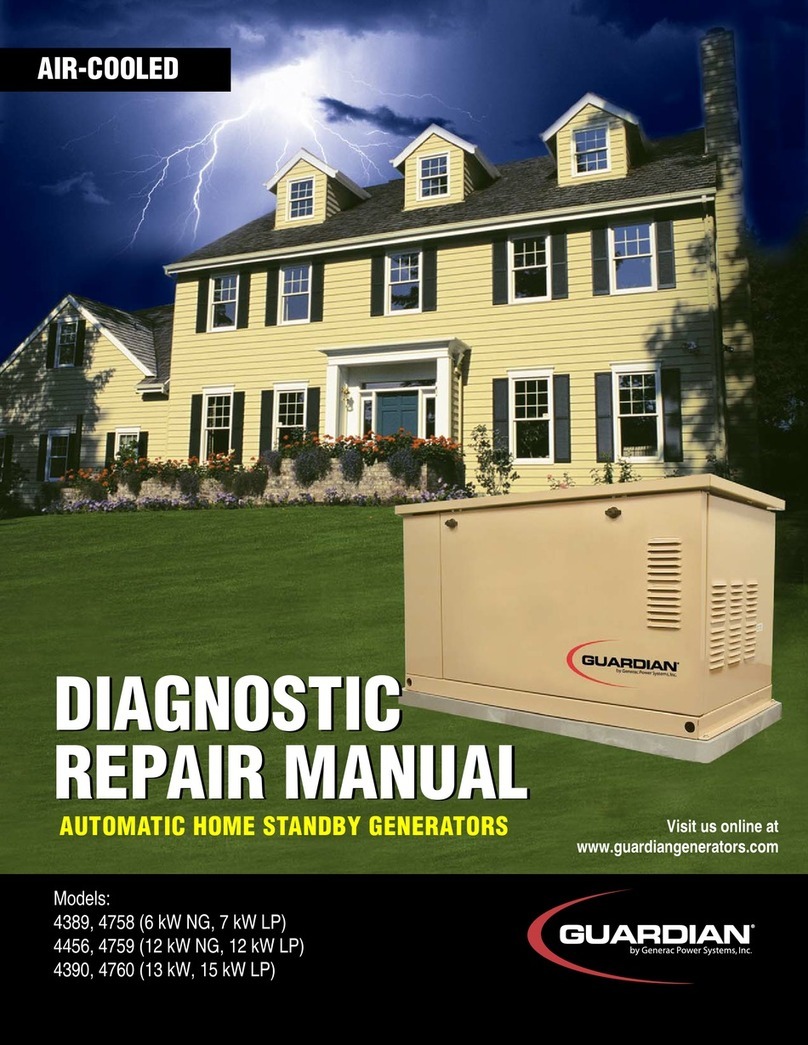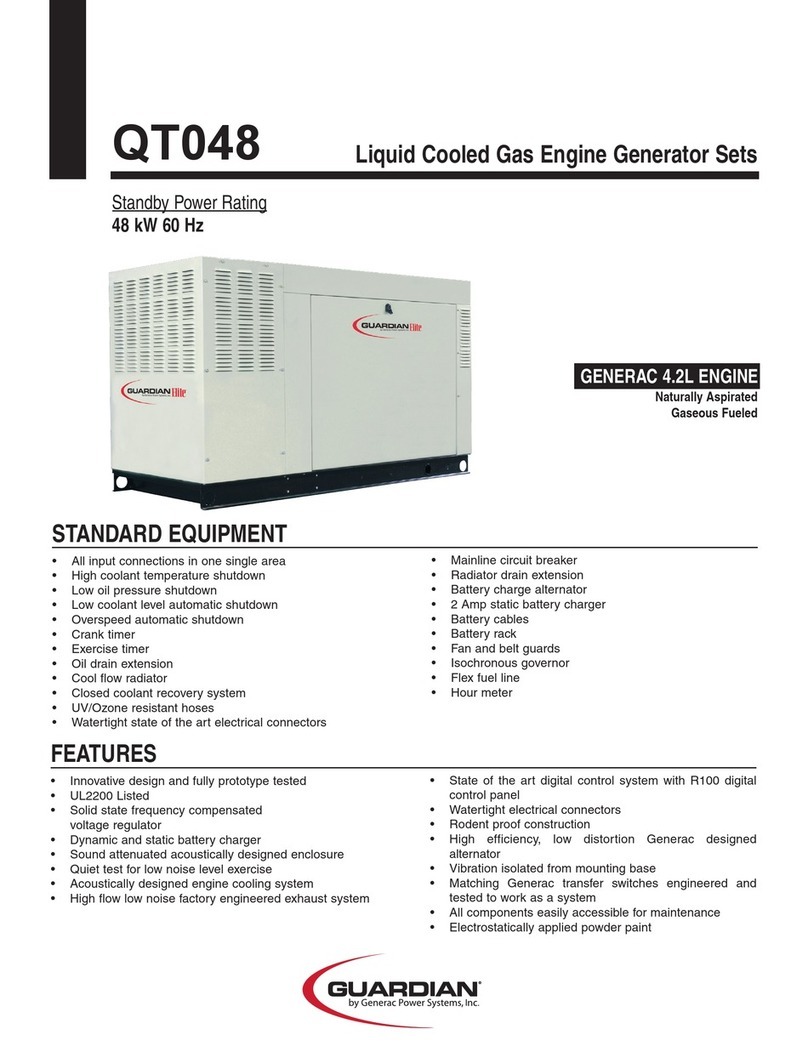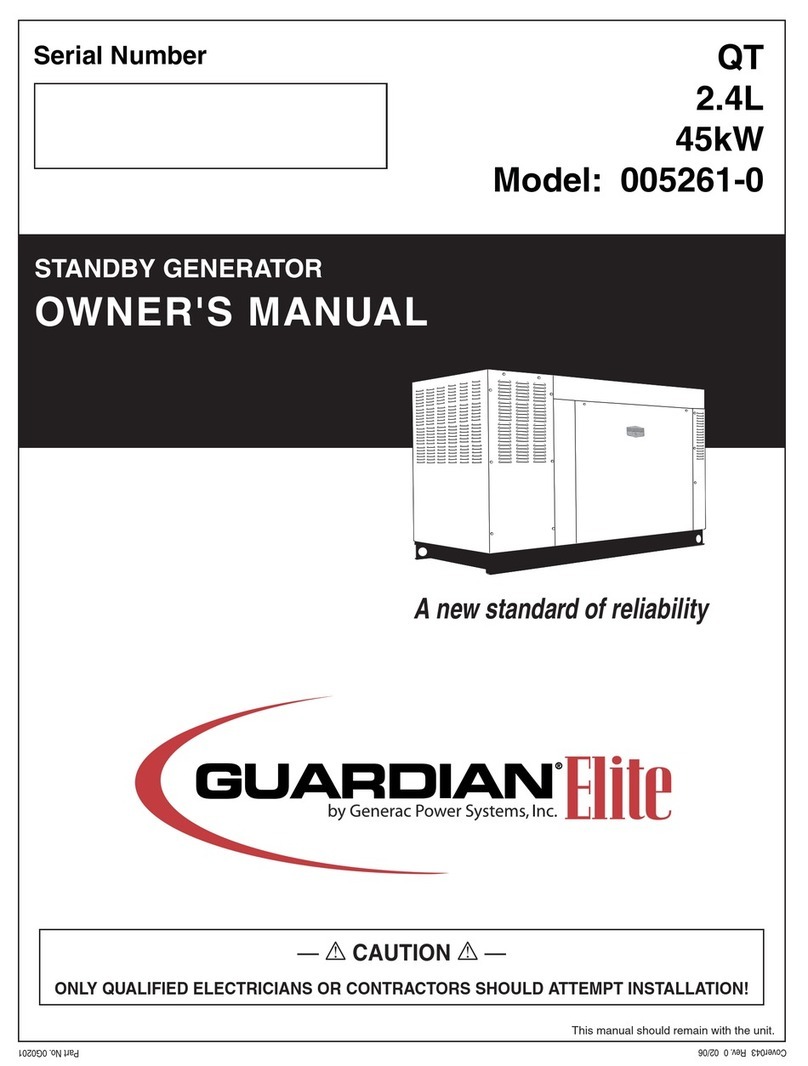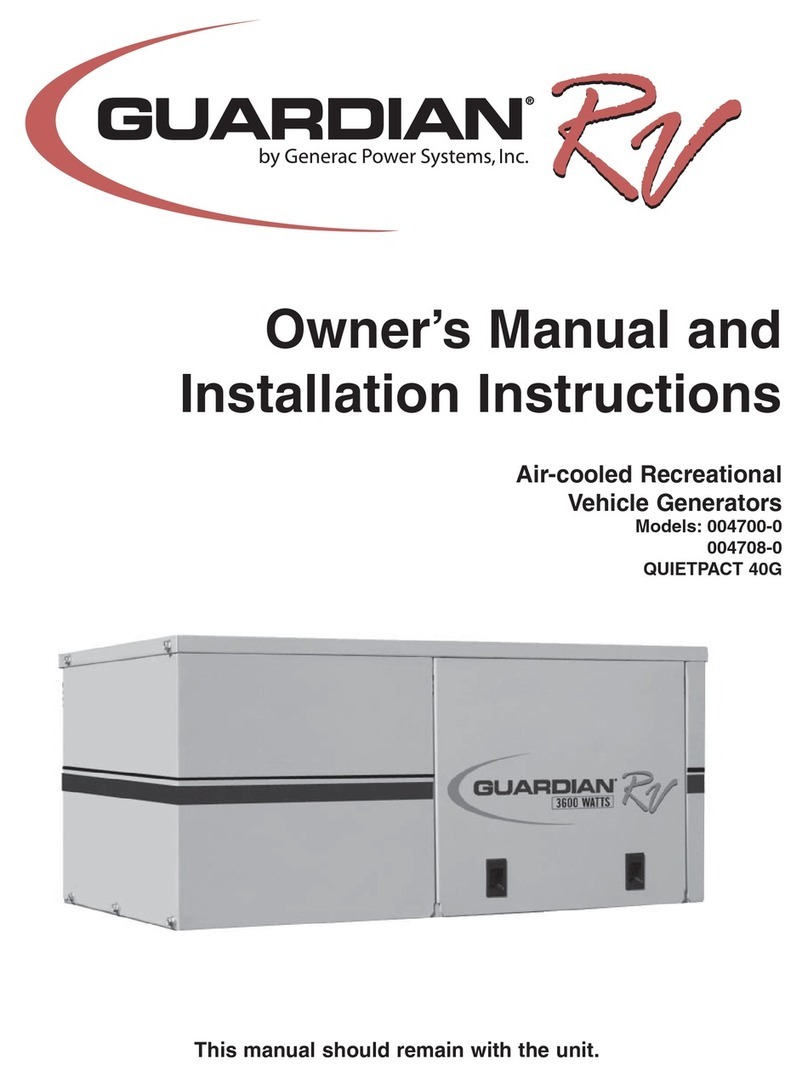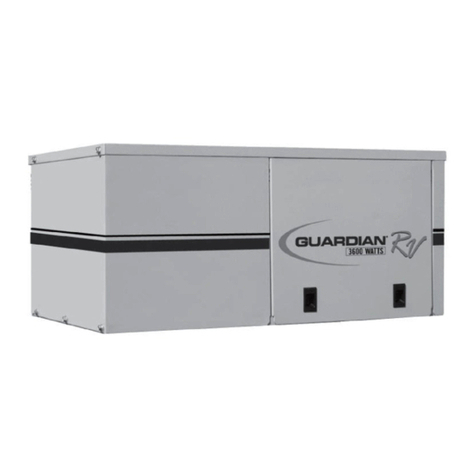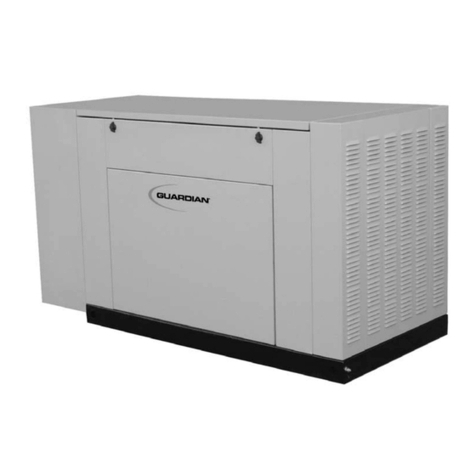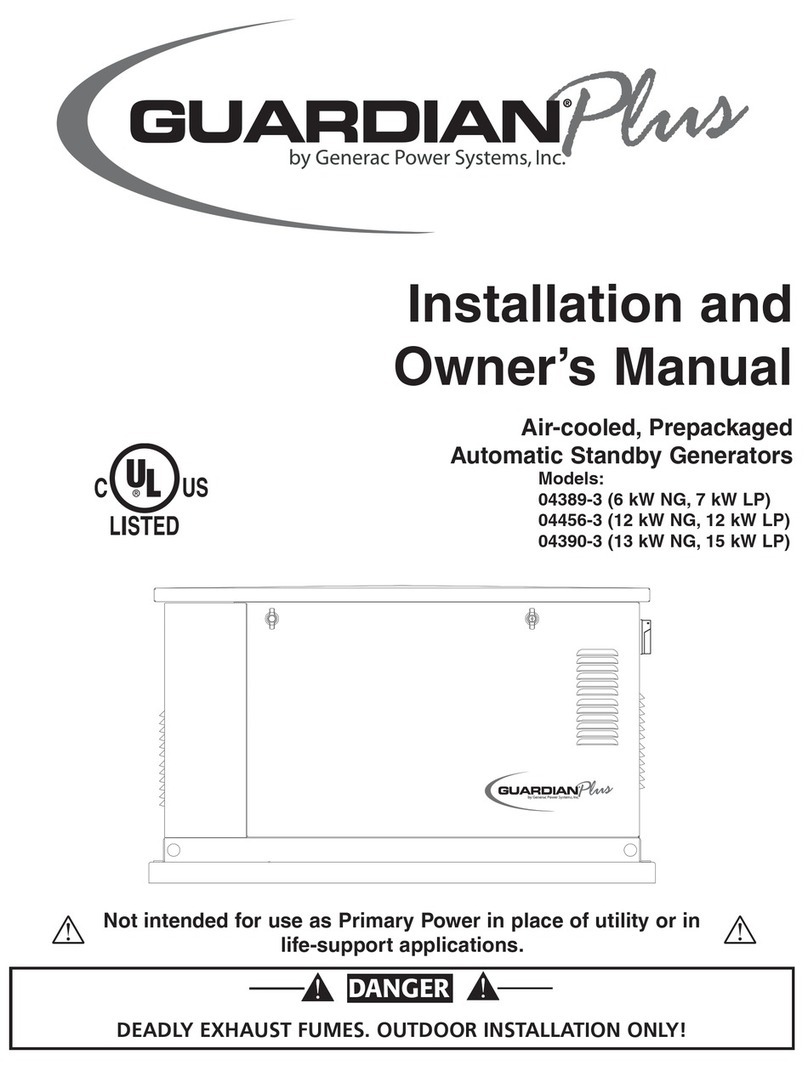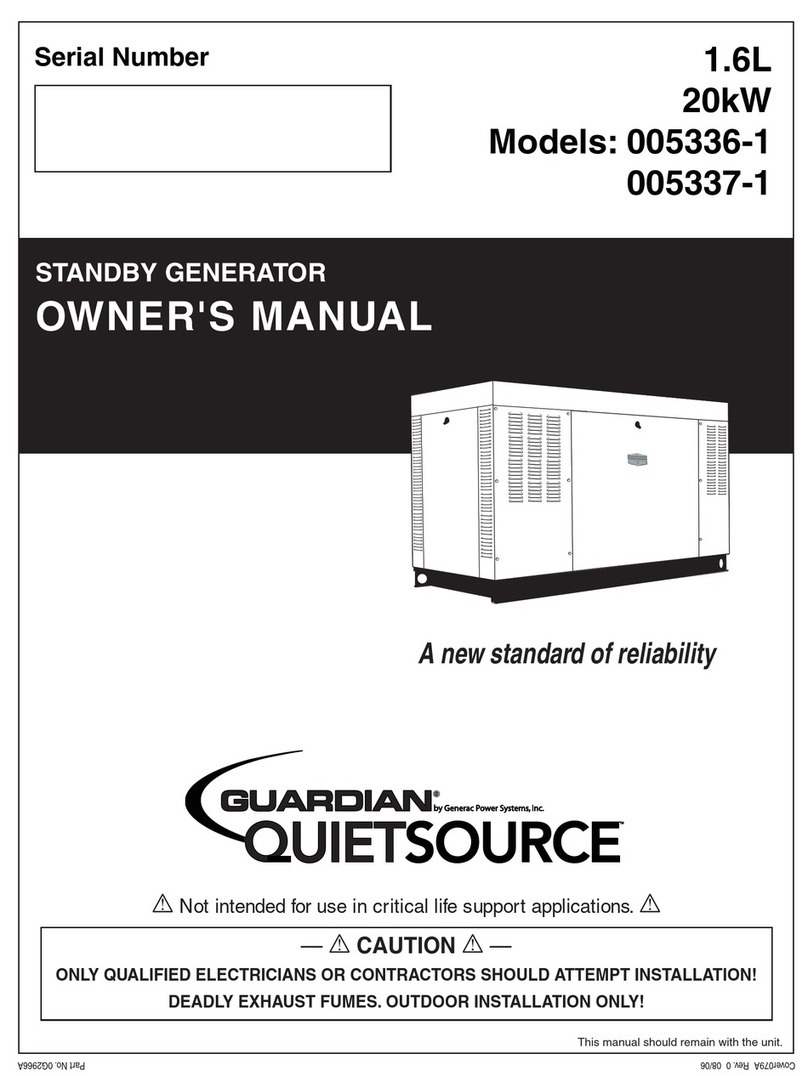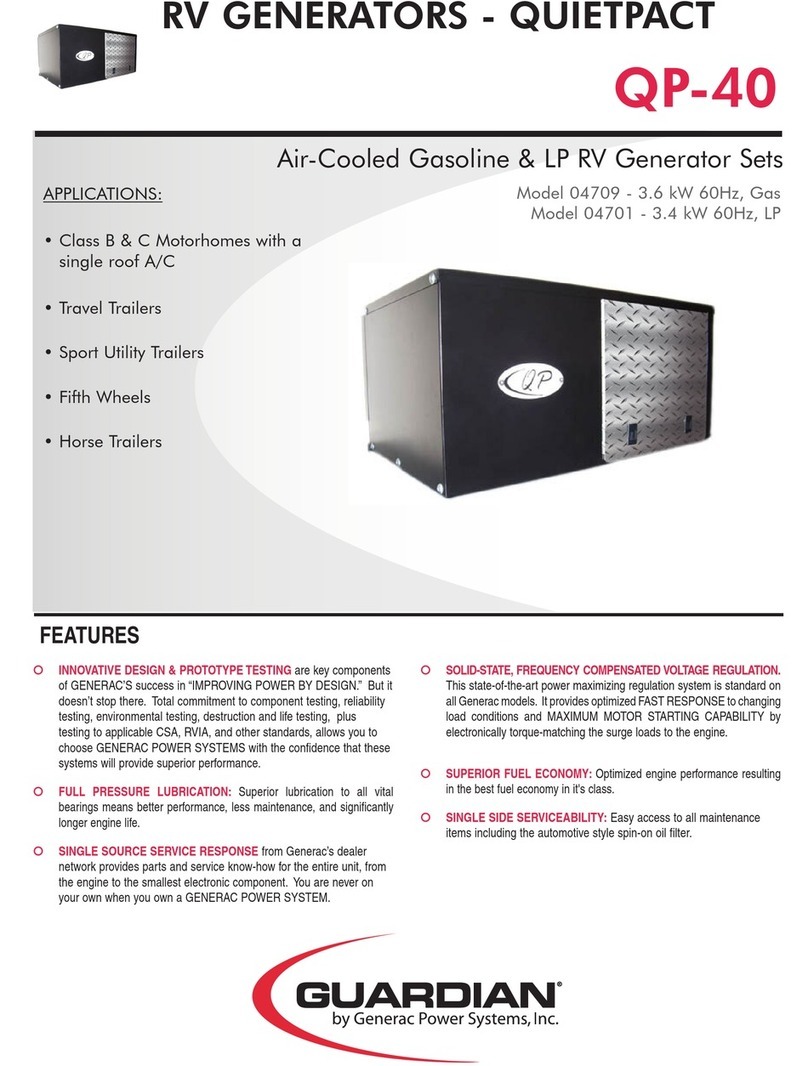
3
• When working on this equipment, remain alert
at all times. Never work on the equipment when
physically or mentally fatigued.
• Inspect the generator regularly, and contact the
nearest Authorized Service Dealer immediately for
parts needing repair or replacement.
• Before performing any maintenance on the genera-
tor, disconnect its battery cables to prevent acci-
dental startup. First, disconnect the cable from the
battery post, indicated by a NEGATIVE, NEG, or
(–). Reconnect this cable last.
• Never use the generator, or any of its parts, as a
step. Stepping on the unit can stress and break
parts, resulting in dangerous operating conditions
due to leaking exhaust gases, fuel leakage, oil leak-
age, etc.
• Never insert any tool or other object through open-
ings in the generator interior, even if the unit is not
running. Serious injury or damage to the equip-
ment could be done.
ELECTRICAL HAZARDS
• The generator covered by this manual produces
dangerous electrical voltages and can cause fatal
electrical shock. Avoid contact with bare wires,
terminals, connections, etc., while the unit is run-
ning. Before operating the generator, ensure all
appropriate covers, guards, and barriers are in
place . If work must be done around an operating
unit, stand on an insulated, dry surface to reduce
shock hazard.
• Do not handle any kind of electrical device while
standing in water, while barefoot, or while hands or
feet are wet. DANGEROUS ELECTRICAL SHOCK
MAY RESULT.
• During installation onto the vehicle, have the
generator properly grounded (bonded), either by
solid mounting to the vehicle frame or chassis,
or by means of an approved bonding conductor.
DO NOT disconnect the bonding conductor, if so
equipped. DO NOT reconnect the bonding conduc-
tor to any generator part that might be removed or
disassembled during routine maintenance. If the
grounding conductor must be replaced, use only a
flexible conductor that is of No. 8 American Wire
Gauge (AWG) copper wire minimum.
• In case of an accident caused by electric shock,
immediately shut down the source of electrical
power. If this is not possible, attempt to free the
victim from the live conductor. AVOID DIRECT
CONTACT WITH THE VICTIM. Use a nonconduct-
ing implement, such as, a dry rope or board, to
free the victim from the live conductor. If the victim
is unconscious, apply first aid and get immediate
medical help.
• Never wear jewelry when working on this equip-
ment. Jewelry can conduct electricity, resulting in
electric shock, or may get caught in moving com-
ponents, causing, injury.
FIRE HAZARDS
• For fire safety, the generator must be installed
and maintained properly. Installation must always
comply with NFPA 70 (latest edition), “National
Electrical Code”, Article 551, and NFPA 1192 (lat-
est edition), “Standard for Recreational Vehicles”,
along with all applicable codes, standards, laws,
and regulations. Adhere strictly to local, state, and
federal electrical and building codes. Comply with
regulations the Occupational Safety and Health
Administration (OSHA) has established. Also,
ensure that the generator is installed in accordance
with the manufacturer’s instructions and recom-
mendations. After proper installation, do nothing
that might alter the installation and render the unit
in noncompliance with the aforementioned codes,
standards, laws, and regulations.
• Keep a fire extinguisher in the vehicle at all times.
Extinguishers rated “ABC” by the National Fire
Protection Association are appropriate for use on
the recreational vehicle generator electrical sys-
tem. Keep the extinguisher properly charged and
be familiar with its use. If there are any questions
pertaining to fire extinguishers, consult the local
fire department.
EXPLOSION HAZARDS
• Do not smoke around the generator. Wipe off
any fuel or oil spills immediately. Ensure that no
combustible material is left in the generator com-
partment, or on or near the generator, as FIRE or
EXPLOSION may result. Keep the area surround-
ing the generator clean and free of debris.
• All fuel types are potentially FLAMMABLE and/or
EXPLOSIVE and should be handled with care.
Comply with all laws regulating the storage and
handling of fuels. Inspect the unit’s fuel system fre-
quently and correct any leaks immediately. Before
placing this equipment into service, the fuel supply
lines must be properly installed, purged, and leak-
tested according to applicable fuel-gas codes.
Safety Rules
Recreational Vehicle Generator

